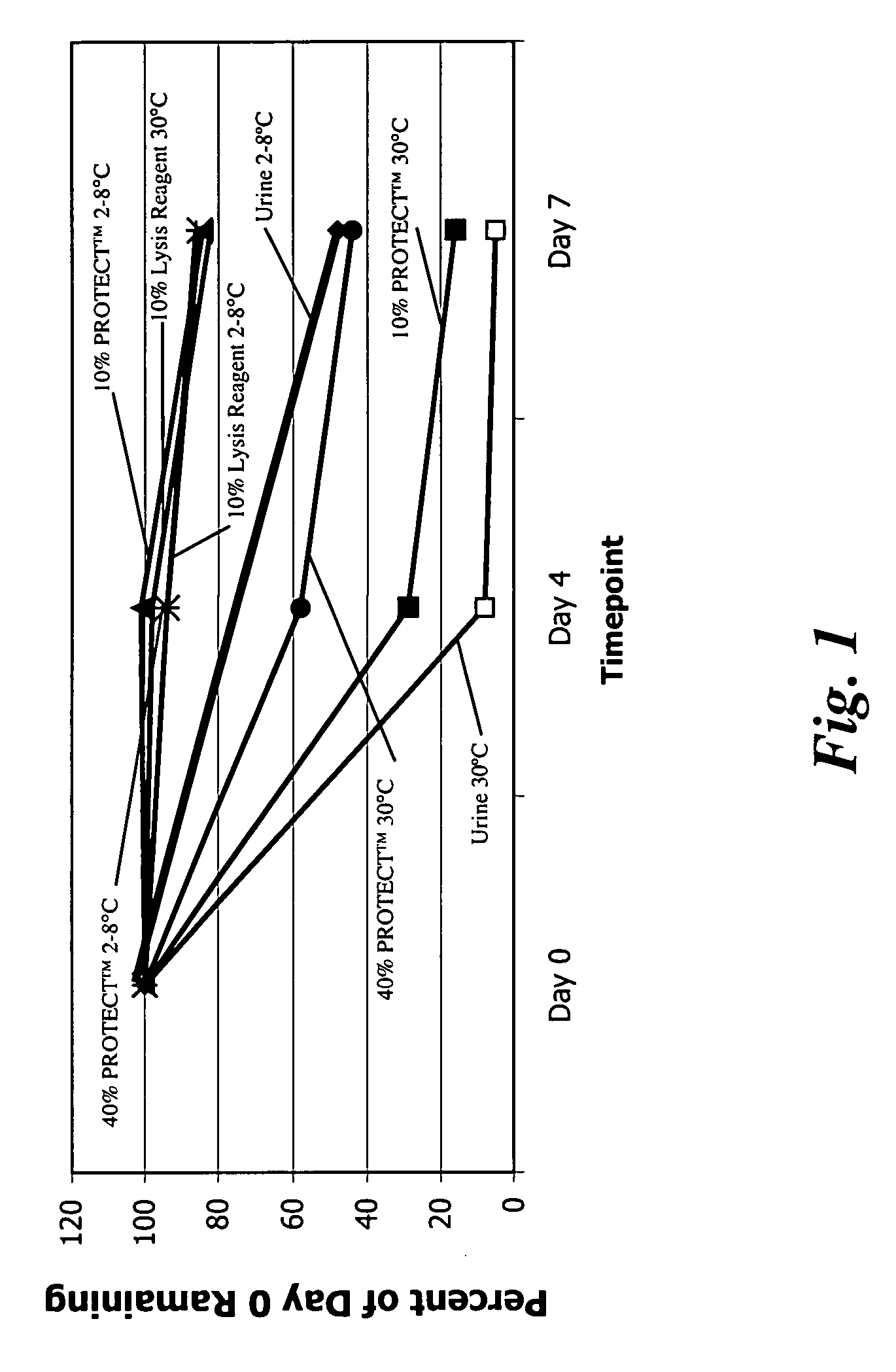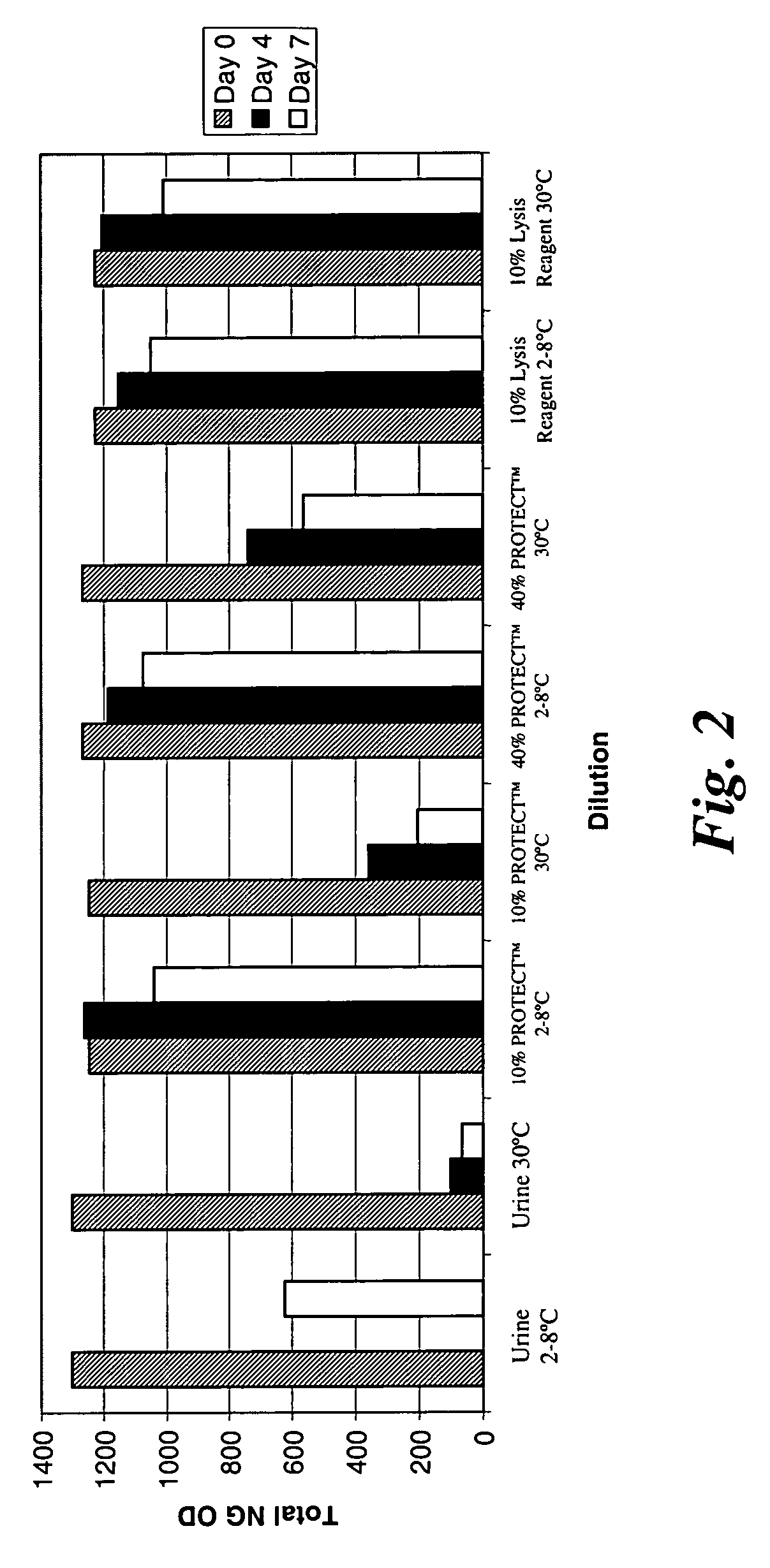Stabilization of biomolecules in samples
a biomolecule and sample technology, applied in the field of sample stabilization, can solve the problems of inability to quickly diagnose, slow performance of culture-based methods, unsuitable for rapid diagnosis, etc., and achieve the effects of reducing the overall cost, facilitating, and minimizing the degradation of biomolecules
- Summary
- Abstract
- Description
- Claims
- Application Information
AI Technical Summary
Benefits of technology
Problems solved by technology
Method used
Image
Examples
example 1
Stability of N. Gonorrhoeae in Urine Samples Under Varied Conditions Over Time
[0113] This example relates to an analysis of N. gonorrhoeae stability in urine samples under different conditions over time. More specifically, N. gonorrhoeae activity levels in patient urine specimens were monitored for seven days at 2-8° C. and at 30° C. Some of the urine samples were left untreated, that is, no stabilization components were added to the samples. A lysis reagent or stabilization component of the invention was added to other samples such that 10% of the total weight of each sample was the lysis reagent. The lysis reagent contained the following components: [0114] 4.2M Guanidine Isothiocyanate; [0115] 3.5% Polyethylene Glycol (MW 10,000); [0116] 160 mM Dithiothreitol; [0117] 50 mM Tris (pH 7.5); and [0118] 0.1% TWEEN® 20.
Two additional conditions were also examined using DNA / RNA PROTECT™ (Sierra Diagnostics, Inc., Sonora, Calif., USA) at final urine concentrations of 10% and 40% by wei...
example 2
Detection of N. Gonorrhoeae / C. Trachomatis in Clinical Samples
[0129] This prophetic example describes a protocol for the detection of N. gonorrhoeae and C. trachomatis in clinical samples.
[0130] Clinical Samples
[0131] Endocervical swab specimens from women and urethral swab specimens from men are collected by standard procedures known in the art. Swabs are inoculated into suitable culture transport media (e.g., 2SP, M-4 (Microtest, Inc., Atlanta, Ga.), Bartel's chlamydial (Intracel Corp., Issaquah, Wash.), etc.), which is then used for PCR analysis (see also, Van der Pol et al. (2000) J. Clin. Microbiol. 38:1105-1112, which is incorporated by reference). Typically, cell cultures are also inoculated. To stabilize biomolecules in the specimens, the lysis reagent (described in Example 1) is added such that 10% of the total weight of each sample is the lysis reagent. The specimens are typically vortexed with the swab still in the tube, which is then generally stored at room temperatu...
PUM
| Property | Measurement | Unit |
|---|---|---|
| temperature | aaaaa | aaaaa |
| temperature | aaaaa | aaaaa |
| temperature | aaaaa | aaaaa |
Abstract
Description
Claims
Application Information
 Login to View More
Login to View More - R&D
- Intellectual Property
- Life Sciences
- Materials
- Tech Scout
- Unparalleled Data Quality
- Higher Quality Content
- 60% Fewer Hallucinations
Browse by: Latest US Patents, China's latest patents, Technical Efficacy Thesaurus, Application Domain, Technology Topic, Popular Technical Reports.
© 2025 PatSnap. All rights reserved.Legal|Privacy policy|Modern Slavery Act Transparency Statement|Sitemap|About US| Contact US: help@patsnap.com


